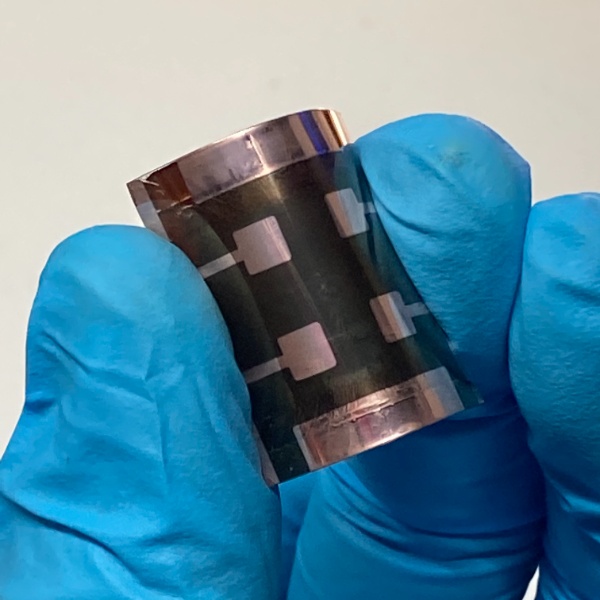An international research group has developed a flexible all-perovskite tandem solar cell with a mitigated open-circuit voltage deficit and reduced voltage loss.
“We've shown flexible tandem efficiency of around 24% on small area cells using the spin coating method as a proof-of-concept,” researcher Fan Fu told pv magazine.
Flexible all-perovskite tandem cells remain less developed than their rigid counterparts, due to a difficult deposition process for the cell's functional layers and a lower open-circuit voltage. This is due to high defect densities within the perovskite absorber layer and at the perovskite/charge selective layer interface.
“Over the past years, many approaches, including compositional engineering, additive engineering, interfacial engineering, and mixed-dimensional engineering, have been explored and the open-circuit voltage deficit has been reduced to values as low as 0.37 V in perovskite solar cells with bandgap of around 1.72 eV suitable for perovskite-Si tandems,” they said. “However, extending these strategies to mitigate the open-circuit voltage deficit in perovskites with even wider bandgaps of around 1.80 eV that are required for two-terminal (2T) all-perovskite tandems remains very challenging.”
For the device subcell, the scientists replaced the conventional hole transport layer (HTL), which is made of poly-triarylamine (PTAA), with another made with a self-assembled monolayer based on the 2PACz carbazole additive. They also passivated the perovskite layer through a postdeposition treatment (PDT) with 2-thiopheneethylammonium chloride (TEACl) and used an electron acceptor made of phenyl-C61-butyric acid methyl ester (PCBM).
They embedded the resulting perovskite subcell in a flexible two-terminal (2T) all-perovskite tandem device, which achieved a power conversion efficiency of 23.8%, a high open-circuit voltage of 2.1 V, a shor-circuit current density of 15.1 mA cm−2, and a fill factor of 75.1%.
Popular content
“Notably, the open-circuit voltage of 2.1 V of our flexible 2T tandem solar cell is higher than the open-circuit voltage of the best performing rigid tandem (2.03 V) and flexible (2.0 V) tandem devices reported to date,” the scientists said.
They introduced the cell technology in “High-Performance Flexible All-Perovskite Tandem Solar Cells with Reduced VOC-Deficit in Wide-Bandgap Subcell,” which was recently published in Advanced Energy Materials.
“Our next step is to replace all the spin-coated steps with an industrial scalable and cost-effective slot-die coating method and demonstrate flexible all-perovskite tandem modules with comparable efficiency as demonstrated in small area cells,” Fu said. “Commercial production will be considered once high efficient flexible tandem mini-module could be demonstrated using industrially scalable methods.”
The research group includes scientists from Federal Laboratories for Materials Science and Technology (EMPA) and the École polytechnique fédérale de Lausanne (EPFL) in Switzerland, Germany's Helmholtz-Zentrum-Berlin, and several institutions in China – Sichuan University, Jiaxing University and Soochow University.
This content is protected by copyright and may not be reused. If you want to cooperate with us and would like to reuse some of our content, please contact: editors@pv-magazine.com.



3 comments
By submitting this form you agree to pv magazine using your data for the purposes of publishing your comment.
Your personal data will only be disclosed or otherwise transmitted to third parties for the purposes of spam filtering or if this is necessary for technical maintenance of the website. Any other transfer to third parties will not take place unless this is justified on the basis of applicable data protection regulations or if pv magazine is legally obliged to do so.
You may revoke this consent at any time with effect for the future, in which case your personal data will be deleted immediately. Otherwise, your data will be deleted if pv magazine has processed your request or the purpose of data storage is fulfilled.
Further information on data privacy can be found in our Data Protection Policy.